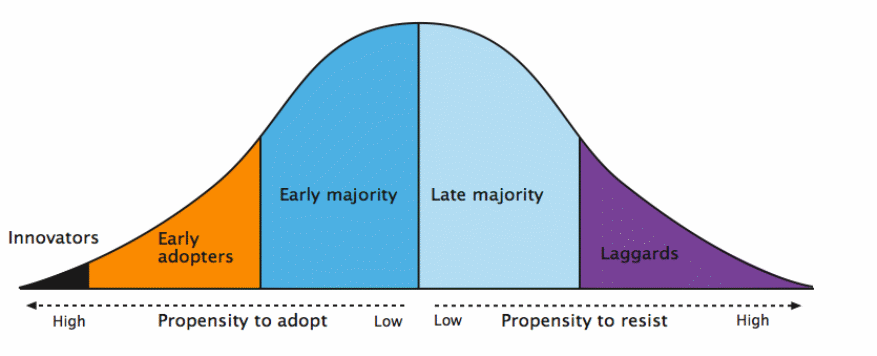It is just a few people who can comfortably discuss the topic “Diffusion of innovation”. Not many have even ever heard of it. Yet to those who have had the chance to know a little about it, it is a topic that left them yearning to have some more of the information. This has been the case for everyone who reads the work of the great author of Diffusion of Innovation who still, theorized the whole idea.
Everett M. Rogers lives everyone who reads his work wondering how genius he could be to have seen such reality. According to Robinson, Diffusion of Innovation seeks to make clear how innovations are spread in a society (Robinson, 2009, p.1).
It also shows how “other techniques and social organization principles are likely to spread along the same route” (Rodgers 1995, p.5). Innovation, on the other hand, refers to ideas, ways or methods of doing things or a product that are considered new in a society.
Diffusion of innovation offers insights on the factors which could make innovations spread faster, importance of understanding the needs of the various user segments and also peer-peer conversations and peer networks (Robinson, 2009, p.1).
Depending on the degree of perception, relative advantage, simplicity and ease of use, observable results, trial ability and compatibility with existing values and practices and observable results, all these qualities contribute immensely to the success of spread of any innovation (Robinson, 2009, p.1-2).
The relative advantage is measured on the basis of tastes and preferences of the users while the compatibility with the existing values and practices is measured against past experiences and the values held by the users. On the other hand, simplicity and ease of use depends on the degree to which an innovation is perceived difficult to use.
Observable results refer to the efficiency of the innovation. Trial abilty refers to the ability of innovation to be tested (Robinson, 2009, p.1-2). However, Robinson argues that continuous improvement through reinventions is the key to spreading an innovation (Robinson, 2009, p.3).
Everett argues that peer-peer conversations help in spreading innovations even more than advertisements and other similar interventions that are used in marketing. He argues that conversations alone can spread adoption since they help in risk management and also take care of any uncertainties.

The graph above depicts a clear picture of how peer-peer communication becomes more influential in spreading an innovation and how mass communication becomes less influential over time.
To emphasize the need to understand the adopters, Rodgers categorized the adopters into five groups: innovators, early adopters, early majority, late majority and laggards. He attached values or personalities to each group. These values were in consistence with his findings. The following graph is important in helping to clearly understand the concept different user segments. Rodgers viewed the innovators as learned personalities who were ready to take risks.

The society views them as the well connected (Rodgers, 1995, p.357). They spend a great deal of “their time, energy and creativity on new ideas and gadgets” (Robinson, 2009, p.5). They love talking about their new ideas and through this the diffusion of innovation begins.
The other group is the early adapters which entails local leaders, people of high social status or in general people of high prestige (Rodgers, 1995, p.357 & 358). They might of the same class with the rest of society, but they have more money or influence (Rodgers, 1995).
They like being ahead of the rest do not fear risks and certainly have the money to invest. Others, who are afraid of the risks and the uncertainties, watch if they succeed or fail. The new innovation becomes a new discussion in the public domain and then it spreads even more (Robinson, 2009). Early adapters are, however, few in number.
According to Rodgers, the next group early majority is less learned and less likely to be leaders, but is, however, likely to follow opinion leaders. They many just as the name suggests. Redesigning the innovation to maximize ease and simplicity can really help in getting them buy the innovation.
The late majority and laggards are more conservative, “often poorer, lower status individuals” (Rodgers, 1995, p.359) who may require peer influence to give in to the adoption. Cheaper innovations and increased familiarity with the new gadgets might be the only way to get them adopt the innovation(Robinson, 2009, p.8).
References
Erevett Rodgers (1995). Diffusion of innovation. Web.
Les Robison (2009). A summary of diffusion of innovation. Web.